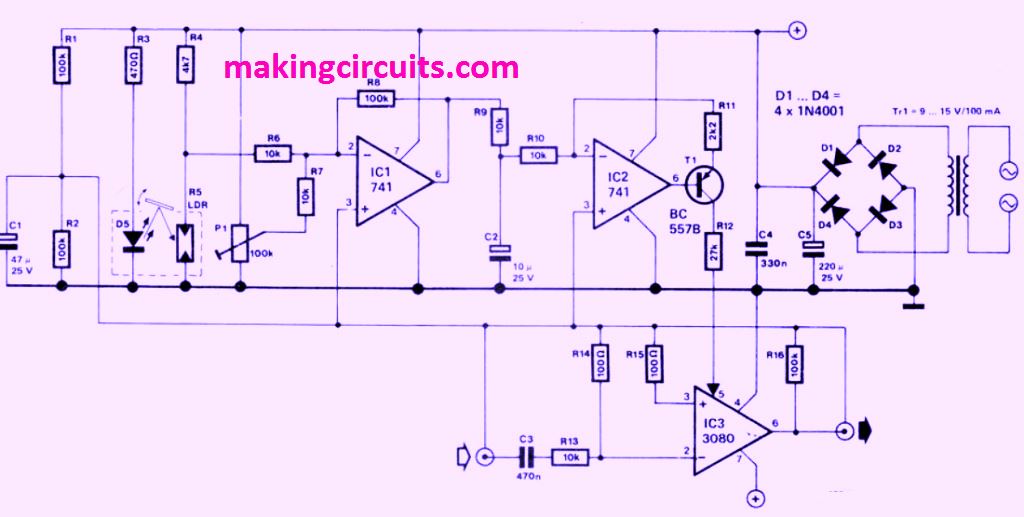Swell pedals are the mechanical pedals used by guitarists to control the volume using their foot since their hands would be tied up during a performance.
This equipment is usually built into electronic organs along with the other pedals.
Guitarists swear by the swell pedal to allow them control over the measured combination of vocals and music.
How it Works

A swell pedal is an extremely easy circuit by itself, consisting of a potentiometer that is controlled using a foot pedal through a toothed bar. But the mechanical construction is a far more complicated job, which the present circuit intends to bypass.
The circuit is built into a flat case about the size of the user’s shoe, as shown in figure below. A hollowed piece of foam rubber in the shape of a wedge with a cropped head is attached to the lid of the case.

The LED D5 and an LDR or light-dependent resistor, sticks out from the lid. The top of the foam rubber is then glued with a small metal or plastic sheet whose underside is covered by a white paper or cardboard. A small rubber mat is then attached on top of the sheet.
When the musician presses the foam rubber down, the reflective white paper or cardboard comes closer to the LED and LDR, resulting in the LDR resistance decreasing.
The amplification, inversion and compensation of IC1 causes a voltage across IC2, which, in turn, controls the drive current that transistor T1 provides to the OTA or operational transconductance amplifier IC3.
How to Calibrate
Assemble the swell pedal box to seal the electro-optical circuit in a light-proof environment. Then calibrate P1 to bring the sound level to the desired point when the pedal is not operated.
Pressing down on the pedal will increase the sound level as required. P1 should be attached outside the pedal box to allow easy adjustment for different circumstances.
Leave a Reply